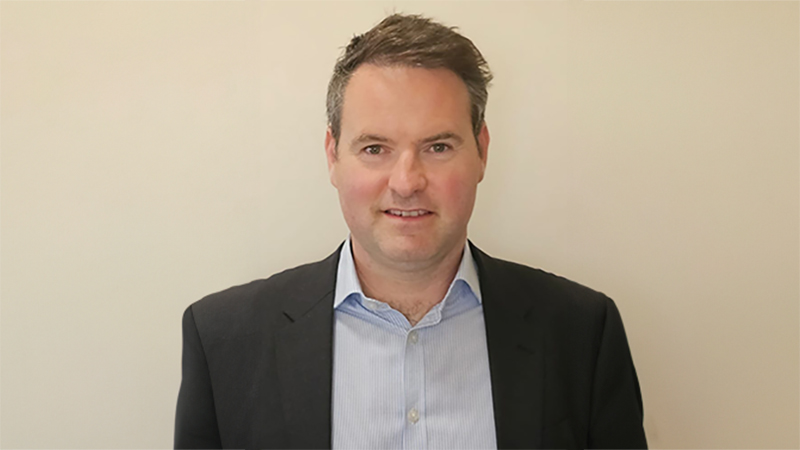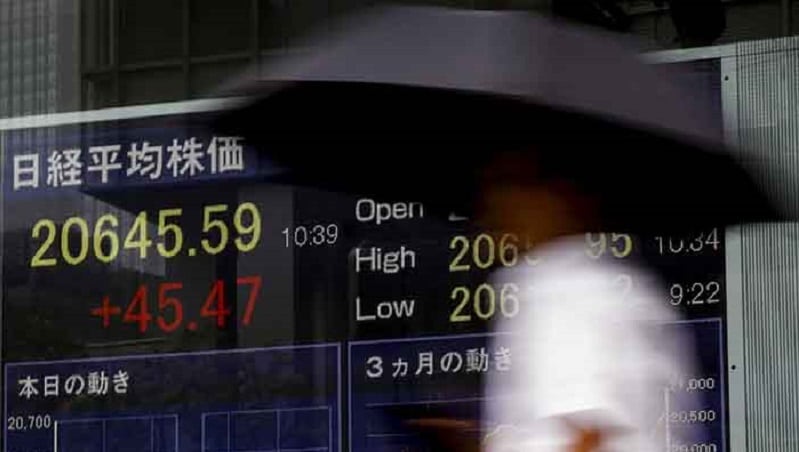Speaking at a Portfolio Adviser’s Japan event on Thursday in front of UK fund selectors, David Townshend, Japan equity specialist on the Goldman Sachs Equity Partners Portfolio, said he believes inflation will not get near the Bank of Japan’s 2% target over the next two years, meaning QE will continue until at least that point.
In fact, he believes inflation, which was recorded as 0.9% in February, is likely to peak at 1.1% before falling back.
“There will be QE for at least two more years,” Townshend said: “[the BoJ] is not going to do anything before then.”
On Friday, the BoJ announced its monetary stimulus would increase for the time being and it is keeping interest rates on hold at -0.1%. BoJ governor Haruhiko Kuroda did not provide any suggestion regarding the central bank’s exit from its QE programme before the 2% inflation target is reached.
Just last week however, Kuroda hinted the BoJ will exit QE in the 2019 fiscal year when it reaches its inflation target and the economy is growing stably, but said unwinding will be a gradual process.
The yen
Townshend said a weaker yen will be a tailwind for Japanese companies this year, although he warned it made sense for investors to hedge the currency in case the dollar strengthened.
Jake Robbins, manager of the Premier Global Alpha Growth fund, says recent yen strength could come to an end as a result of Kuroda’s commitment to extending QE.
“A stronger yen not only suppresses inflation, it also has a fairly negative impact on the equity markets which are dominated by exporters,” he says. “If the central bank can convince markets that they are fully committed to continued monetary easing whilst others continue to tighten, Japanese equities may continue to see a relief rally.”
Economic research firm Capital Economics said slow wage growth, subdued inflation expectations and the strengthening of the exchange rate mean that inflation will remain below the bank’s 2% target for the foreseeable future. That means the BoJ will have to keep policy loose for longer.
It said: “The recent strengthening of the yen will keep a lid on consumer goods inflation. What’s more, the government intends to lift the sales tax next October which will weaken domestic demand and reduce price pressures. More generally, the bank has had little success in lifting expectations of future price gains among households and firms. As a result, wages are barely rising even though the labour market is exceptionally tight.”
Never been so profitable
Last year was a strong one for Japan with Japanese Smaller Companies charting as the second-best performing IA sector with a return of 31.55%. In February, Japanese Smaller Companies was the third best returning sector with 0.33%, and Japan was fifth with a return of 0.03%.
Will this momentum continue? Yes, according to fund managers who remain in a buoyant mood over the country’s investment prospects.
Also speaking at the PA event, Sophia Li, co-portfolio manager on the First State Japan Focus fund, agreed that QE is unlikely to unwind within the next two years, but highlighted Japan’s promising corporate story.
Li, whose fund returned 39.57% last year making it the best performing in the IA Japan sector between 30 December 2016 and 8 December 2017, said since 1997 Japan’s nominal GDP has grown 1.2% versus total corporate profit up by 173.6% and the yen has strengthened by 16% against the US dollar.
“The yen does not have to be weak for the stock market to flourish,” she said.
Dan Carter, manager of the Jupiter Japan Income fund, said Japan had never been so profitable, pointing to the record high level of the Topix’s pre-tax profit margins.
He said profit margins hit about 6% in September 2017, having previously struggled to break out of a band of 1.5% to 4%.
“It has broken out of its historic range by 200-300 basis points,” said Carter. “It is a completely different animal than any time post-war.”
Automation, car parts and healthcare
Fund managers see opportunities in Japan in automation and robotics, car parts manufacturers and healthcare plays on the ageing population.
Indeed, Li said the First State Japan Focus fund is largely exposed to automation and robotics, drug store operators that stand to benefit from people living longer and auto parts manufacturers.
The fund’s top holding is Keyence Corp (6.2%) which develops and manufactures automation sensors, vision systems, barcode readers, laser markers, measuring instruments, and digital microscopes. This is followed by Start Today, operator of the Japan’s largest fashion e-commerce platform Zozotown, at 6%, and human resources services provider Recruit Holdings at 5.3%.
Li also flagged the portfolio’s holding in automotive headlamp producer Koito Manufacturing as an example one to watch, especially as LED headlamp penetration is only at 18% and is expected to continue rising, driven by higher driver safety standards and better design flexibilities.
Townshend said the GS Equity Partners Portfolio is exploiting similar themes with about 50% of the fund exposed to car components, automation and healthcare stocks.
Townshend is bullish on car parts manufacturers but particularly bearish on Japan’s traditional car manufacturing sector. He believes the latter industry is fully recovered and unlikely to experience big sales growth. As a result, the only pure auto manufacturer holding in the portfolio is Suzuki.
The fund’s top holding at 7.7% of the portfolio is Nidec Corporation which produces electric motors found in cars among other things. In second position at 6.1% is SMC Corp which manufactures components to support industrial automation, followed by Hoya Corp (5.5%) which produces optical products for the healthcare market.
Carter’s fund has an income focus and focuses on the themes of demographics, technology and governance. The portfolio’s top three sector weightings are telecoms, IT and services; construction, real estate and Reits; and financials.
According to the fund’s factsheet, at the end of January the top active positions are Sumitomo Mitsui Financial Group at 4.3%, global engineering company JGC Corp at 3.7% and telecommunications firm KDDI Corp at 3.6%.
He picked out Iriso Electronics which makes floating board-to-board connectors for its balance sheet strength, improving governance from increasing board independence, and because it recently raised its payout ratio from 17% to 30%.











